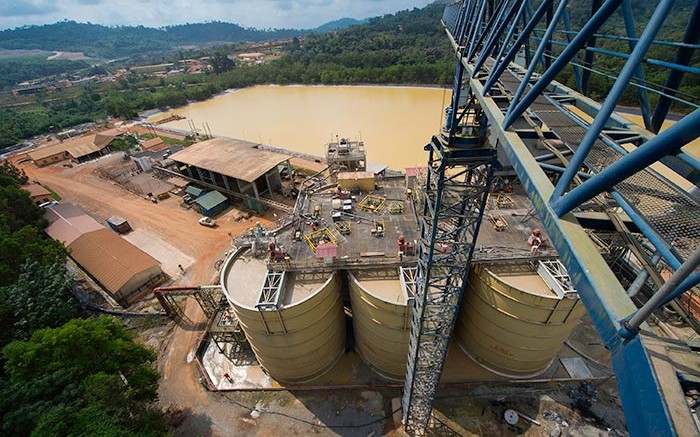Cash-strapped Golden Star Resources (TSX: GSC; NYSE-MKT: GSS) has reported positive feasibility study results on adding an underground mine to its producing Wassa open-pit gold mine in Ghana to bring down costs.
Underground mine production should start in early 2016 and continue alongside the open-pit mine into 2024. The combined operation would churn out 163,000 oz. a year, at average life-of-mine cash-operating costs of US$780 per oz. The underground mine should boost output and improve costs. Last year, the Wassa open-pit sold less than 113,000 oz. at operating costs of US$971 per oz.
The study pegs start-up costs for the underground operation at US$39 million and total capital for the combined mine at US$189 million, including sustaining costs. Given the low initial costs, the underground portion has a strong return on investment. Using a US$1,200 per oz. gold price and a 5% discount rate, the post-tax net present value is US$176 million, with an 83% post-tax internal rate of return. Payback should occur in three years.
Golden Star has been producing from the Wassa pit since 2005 via a carbon-in-leach processing plant, with a 2.7-million-tonne capacity per year. Once the underground part comes online, the firm expects the open pit will produce 2 million tonnes a year of mill feed, with the rest coming from underground.
The junior initiated drilling below the Wassa pit in late 2011, and has delineated underground reserves at Wassa of 5.4 million tonnes grading 4.27 grams gold for 746,000 oz. in 2014. This brought combined reserves to 24 million tonnes of 2.04 grams gold for 1.58 million oz. as of Dec. 31, 2014.
Despite adding underground reserves, total mine reserves fell by 20% from the end of 2013 due to open-pit mining depletion, and the company’s move to exclude lower-grade ounces from Wassa and its other Ghanaian gold mine Bogoso, which saw its reserves fall by 82% to 350,000 oz.
On a positive note, Wassa’s overall grade reserve increased from 1.75 grams gold in 2013 to 2.04 grams at the end of 2014.
BMO analyst Andrew Breichmanas notes the economics of the feasibility study were in line with his expectations, adding Golden Star’s management had “well-telegraphed” the reserve downgrade. While the firm’s working capital deficit of US$32 million and long-term debt of US$86 million at year-end “continue to overshadow value at Wassa,” advancing the Wassa underground mine and halting the mining of marginal refractory ounces at Bogoso “represent significant steps toward becoming a lower-cost producer,” Breichmanas writes.
Golden Star is guiding 2015 production at Wassa of 105,000 to 120,000 oz. and at Bogoso of 145,000 to 155,000 oz. Combined operating costs should come within US$860 to US$960 per oz., with all-in sustaining costs of US$1,050 to US$1,160 per oz.


Be the first to comment on "Golden Star aims to go underground at Wassa"